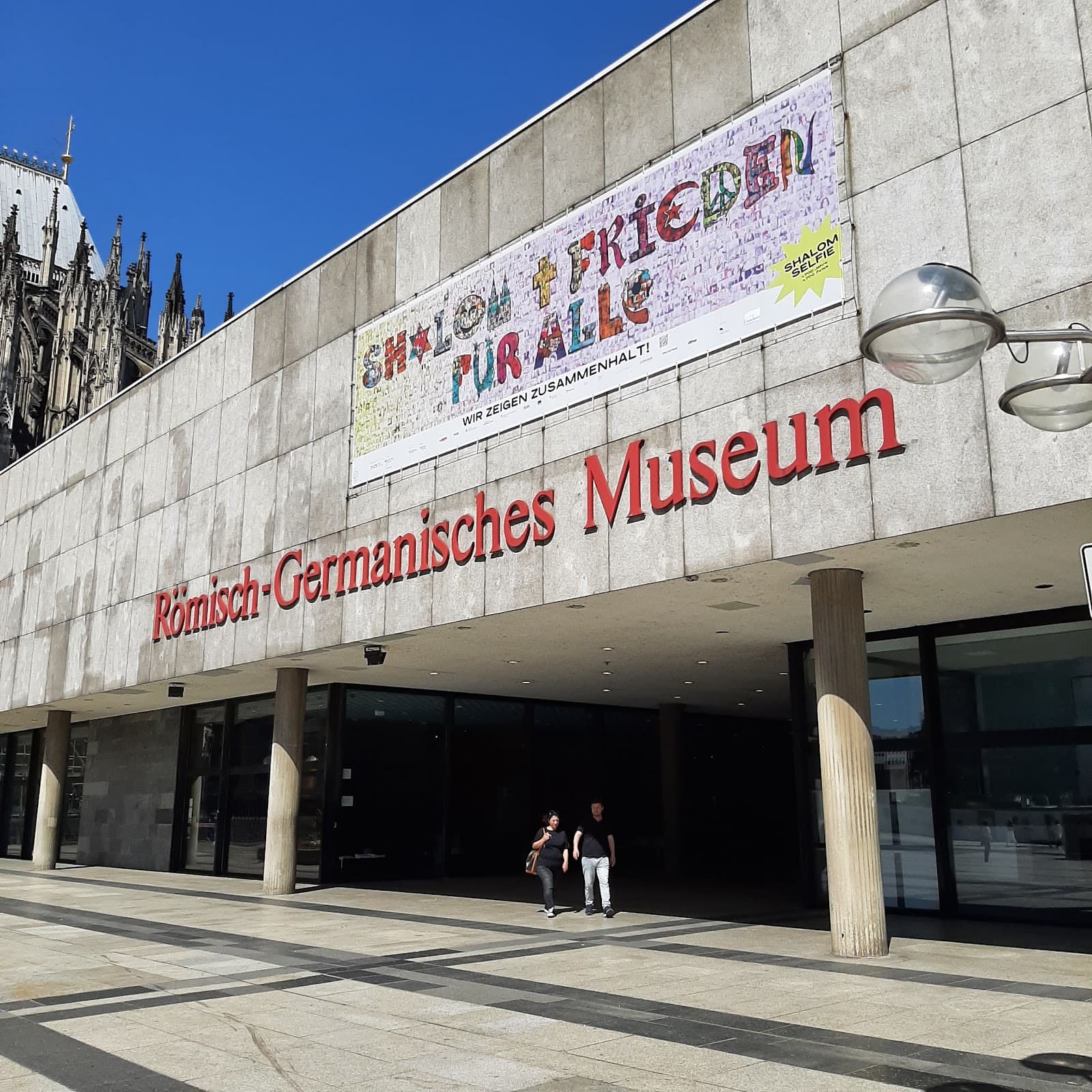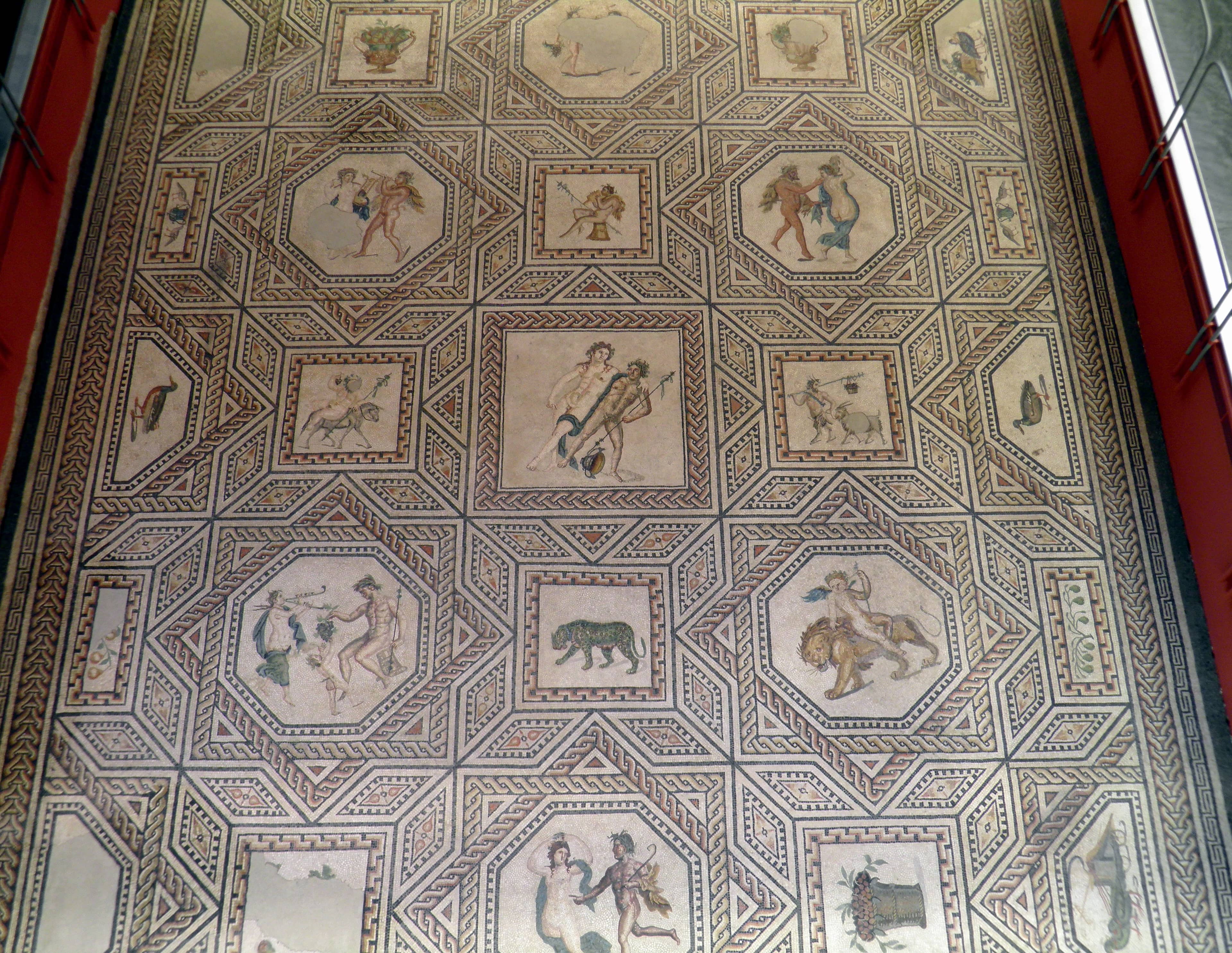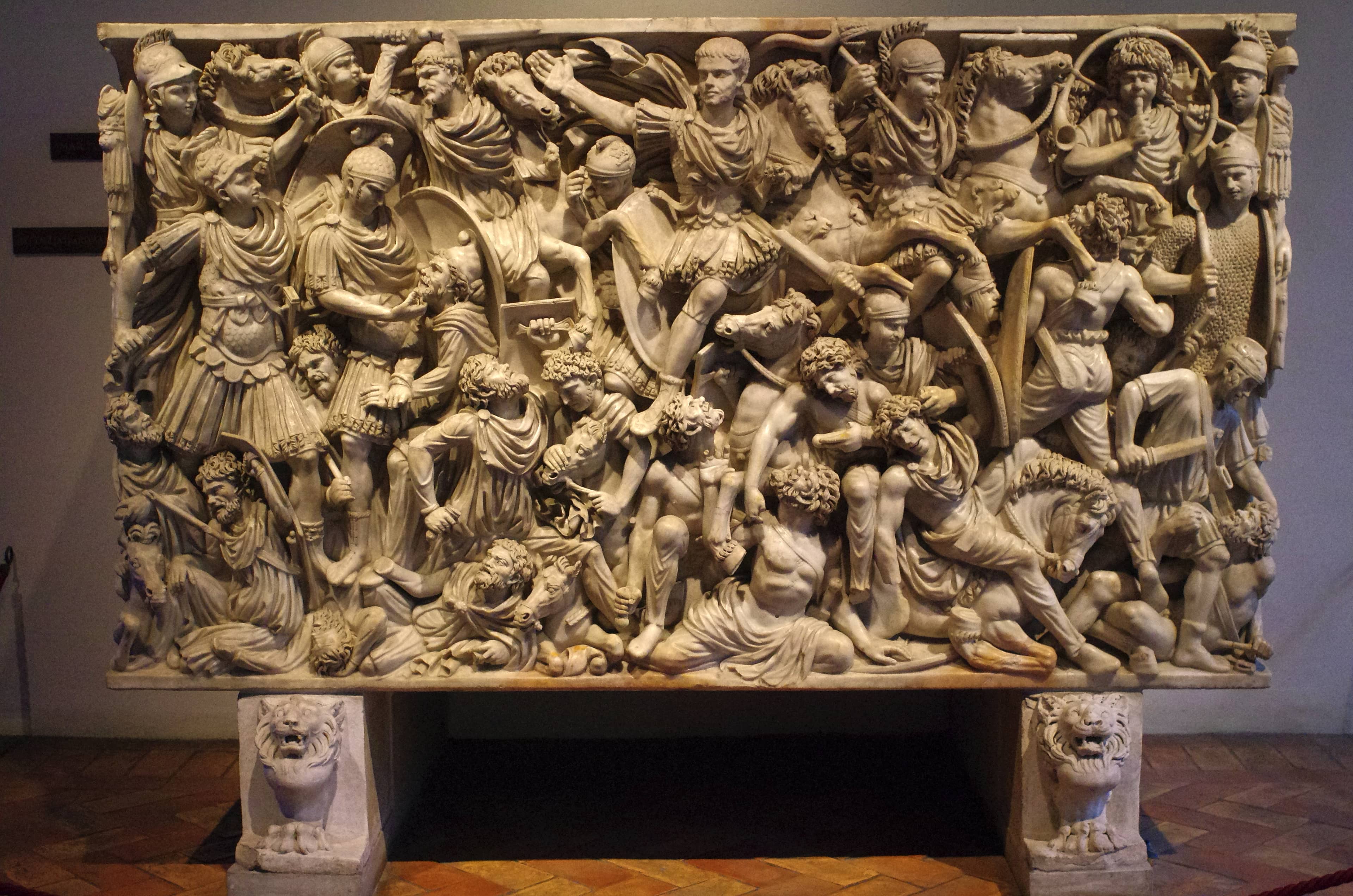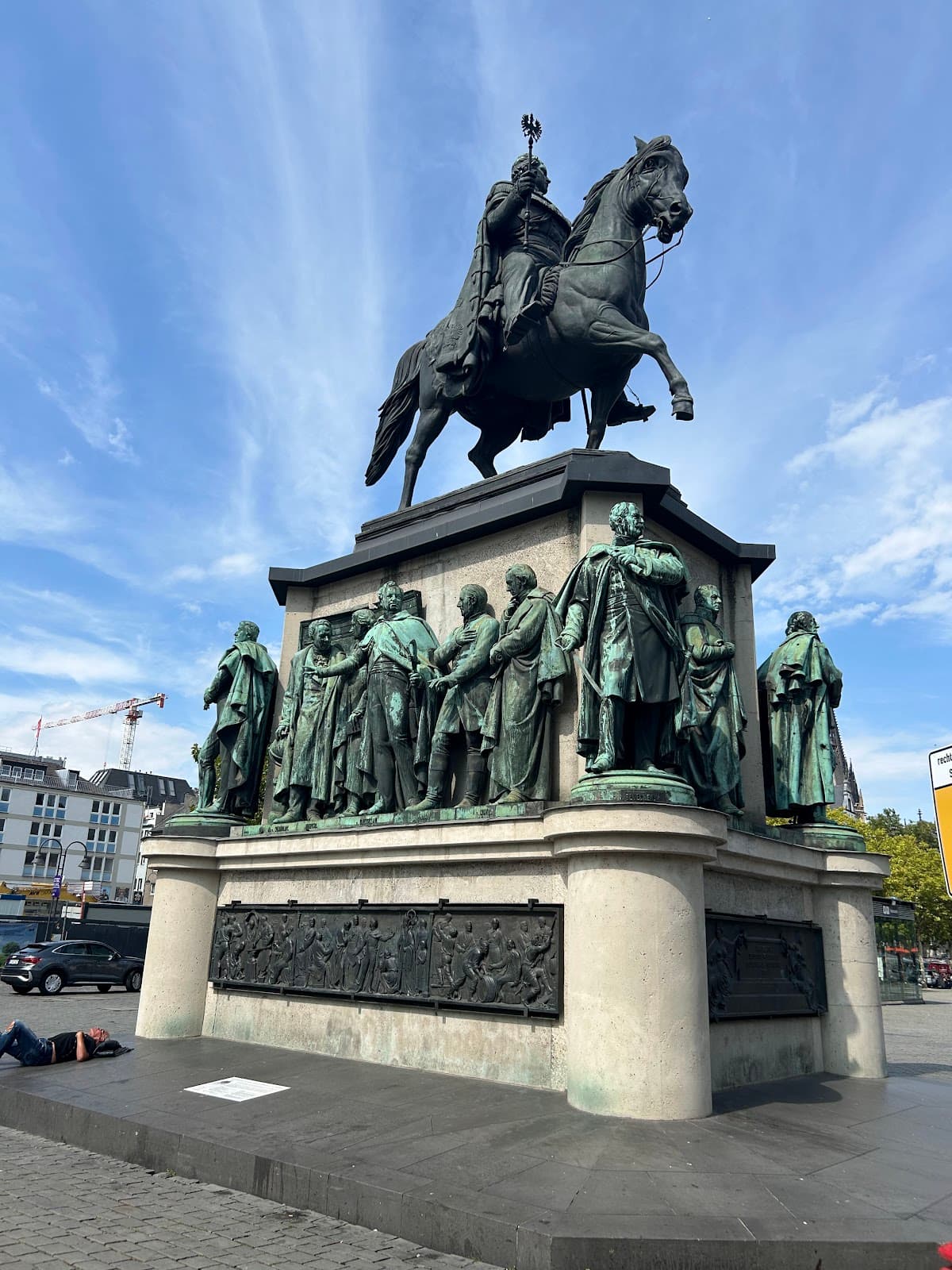
Romano-Germanic Museum
Explore Cologne's Roman past at the Romano-Germanic Museum, home to stunning mosaics and artifacts.
Highlights
Must-see attractions

Social
From TikTok & Reddit
Best Time
Fewer crowds, more peaceful exploration

Romano-Germanic Museum
Best Time
Fewer crowds, more peaceful exploration
Highlights
Must-see attractions
Explore Cologne's Roman past at the Romano-Germanic Museum, home to stunning mosaics and artifacts.
"The museum is excellent; it immerses you in history and allows you to feel the atmosphere of that era."

Check Renovation Status
Confirm museum opening and exhibition locations due to ongoing renovations.
Book Tickets Online
Secure your entry and avoid queues by purchasing tickets in advance. :admission_tickets:

Highlights
Discover the most iconic attractions and experiences
Roman Mosaics
Main exhibition halls
Marvel at the stunning and well-preserved Roman mosaics, showcasing intricate artistry and daily life scenes from antiquity.

P Dionysus Mosaic
Central hall
Behold the magnificent P Dionysus Mosaic, a true masterpiece of Roman craftsmanship and a centerpiece of the museum's collection.

Roman Military Artifacts
Special exhibition areas
Explore a fascinating array of Roman military equipment, offering insights into the lives of soldiers and the empire's might.
Plans like a pro.
Thinks like you
Planning Your Visit
Check for Renovations Before You Go
Book Tickets in Advance
Best Times
Insider Tips
from TikTok, Instagram & Reddit
Check Renovation Status
Confirm museum opening and exhibition locations due to ongoing renovations.
Book Tickets Online
Secure your entry and avoid queues by purchasing tickets in advance. :admission_tickets:
Wear Comfortable Shoes
You'll be doing a lot of walking and standing, so comfy footwear is a must! :athletic_shoe:
Allow Ample Time
Give yourself at least 2-3 hours to fully appreciate the extensive collections. :clock1:
Archaeology question
Tips
from all over the internet
Check Renovation Status
Confirm museum opening and exhibition locations due to ongoing renovations.
Book Tickets Online
Secure your entry and avoid queues by purchasing tickets in advance. :admission_tickets:
Wear Comfortable Shoes
You'll be doing a lot of walking and standing, so comfy footwear is a must! :athletic_shoe:
Allow Ample Time
Give yourself at least 2-3 hours to fully appreciate the extensive collections. :clock1:
Combine with Cathedral Visit
The museum is conveniently located near the Cologne Cathedral. :world_map:
What Travellers Say
Reviews Summary
Visitors praise the Romano-Germanic Museum for its beautiful and extensive art collection, offering something for everyone and providing an immersive historical experience. However, some reviews mention issues with building construction obstructing views and concerns about potential damage to nearby landmarks.
"Art was very beautiful and there was ALLOT of art for everyone something different"
Wessel Smit
"Horrible building obstructing the view on the Cologne Cathedral. Contributed to the risk of damaging the cathedral structure."
Kasia Kordys
"It was closed and under construction it seems? No information on why or for how long."
L D
What People Like
What People Dislike
Frequently Asked Questions
🚇 🗺️ Getting There
The Romano-Germanic Museum is centrally located in Cologne, right next to the Cologne Cathedral. You can easily reach it by public transport, with several tram and bus lines stopping nearby. If you're arriving by train, it's a short walk from the Köln Hauptbahnhof (main station). Many visitors find it convenient to combine their visit with exploring the cathedral and the surrounding old town.
Parking in the immediate vicinity of the museum can be challenging due to its central location. It's recommended to use public transportation or consider parking garages a short walk away. Some garages include Heumarkt or Dom/Börse.
Absolutely! The museum is very accessible via public transport. Tram lines 1, 5, 7, 9, and bus lines 106, 133, 135 stop at the 'Dom/Hbf' or 'Appellhof' stations, which are just a short walk away.
While efforts are made for accessibility, it's best to check the museum's official website or contact them directly for the most up-to-date information regarding accessibility features, as renovations can sometimes impact access.
From Cologne Bonn Airport (CGN), you can take the S-Bahn train (S19) directly to Köln Hauptbahnhof, which is a short walk from the museum. Alternatively, taxis and ride-sharing services are available.
🎫 🎫 Tickets & Entry
Ticket prices can vary, and it's always best to check the official Romano-Germanic Museum website for the most current admission fees. Look out for potential discounts for students, seniors, or groups.
While not always mandatory, booking your tickets online in advance is highly recommended, especially during peak tourist seasons or weekends. This helps guarantee your entry and can save you time waiting in line.
Opening hours can change, particularly due to renovations. Always consult the official Romano-Germanic Museum website for the most accurate and up-to-date opening times before your visit.
The museum frequently hosts special exhibitions that complement its permanent collections. Check the museum's official website for details on current and upcoming temporary exhibitions.
Some city passes for Cologne may include entry to the Romano-Germanic Museum. It's worth checking the benefits of any city pass you are considering to see if it offers good value for your planned itinerary.
🎫 🏛️ Onsite Experience
Don't miss the incredibly detailed Roman mosaics, especially the large P Dionysus Mosaic. The collection of Roman military artifacts and everyday objects also provides a fascinating glimpse into ancient life.
To truly appreciate the extensive collections, plan for at least 2 to 3 hours. If you're a history enthusiast, you might want to allocate even more time.
Generally, photography for personal use is permitted without flash. However, always look for signage or ask museum staff if you're unsure, as restrictions can apply to specific exhibits or temporary displays.
The museum often offers guided tours, which can greatly enhance your understanding of the exhibits. Check the museum's schedule upon arrival or their website for tour times and languages.
The museum's proximity to the Cologne Cathedral is significant. It highlights the layers of history in Cologne, with Roman foundations existing alongside medieval and modern structures. The museum's architecture itself was designed to complement the cathedral.
🍽️ 🍽️ Food & Dining
While the museum might have a small cafe or vending machines, dedicated dining facilities are usually limited. However, the area surrounding the museum is packed with cafes and restaurants.
You'll find a wide variety of culinary options near the museum, from traditional German pubs serving hearty meals to international cuisine and quick bites. The area around the cathedral is bustling with eateries.
Yes, you can find more affordable options like bakeries, Imbiss (snack stands), and casual cafes a short walk away from the immediate tourist hotspots around the cathedral.
Typically, museums discourage bringing outside food and drinks into exhibition areas to protect the artifacts. It's best to consume them outside or in designated areas if available.
Many visitors enjoy the cafes and restaurants in the old town near the cathedral for their convenient location and atmosphere. Exploring the side streets can lead to some hidden gems.
📸 📸 Photography
The P Dionysus Mosaic is a stunning subject. Also, consider capturing the scale of the Roman artifacts and the museum's architecture, especially its integration with the Cologne Cathedral.
No, flash photography is generally prohibited inside museums to protect the delicate artifacts from light damage. Always check for specific signage.
You can expect to capture detailed shots of Roman mosaics, pottery, sculptures, and military equipment. The museum's layout also offers opportunities for architectural photography.
While personal photography is usually allowed, commercial photography or filming might require special permission. For social media sharing, it's generally fine as long as you respect the no-flash rule.
The lighting inside the museum is generally controlled. However, visiting during less crowded times, like weekday mornings, can allow for more unobstructed shots of the exhibits.
For Different Travelers
Tailored advice for your travel style
👨👩👧 Families with Kids
To make the visit more engaging for kids, consider focusing on specific themes like daily life in Roman times or the tools soldiers used. Bringing a small notebook for them to sketch their favorite artifacts or write down interesting facts can also enhance their learning experience. Remember to check for any family-friendly guides or activities the museum might offer.
🏛️ History Buffs & Archaeology Enthusiasts
Given the museum's focus, consider dedicating ample time to explore each section thoroughly. Engaging with the museum's detailed descriptions and any available audio guides will greatly enrich your understanding. If you're a student of archaeology, like one Reddit user mentioned, this museum offers invaluable context for your studies.
Deep Dives
In-depth insights and expert knowledge
The Roman Legacy in Cologne
The museum's location is not accidental; it's strategically placed to highlight the continuity of history in Cologne. The juxtaposition of Roman ruins with the towering Gothic Cologne Cathedral is a powerful visual representation of the city's layered past. This connection between ancient and medieval eras is a recurring theme for visitors exploring the area.
Visitors often express awe at the scale and preservation of the Roman artifacts. From intricate mosaics that adorned the floors of wealthy villas to the tools and weapons used by Roman soldiers, the museum offers an immersive experience. It allows you to feel the atmosphere of that era, as one reviewer put it, providing a tangible link to a civilization that shaped Europe. [^Review]
Key Roman Sites in Cologne
Beyond the museum, remnants of Roman Cologne can be found throughout the city. Look for sections of the old Roman city wall, the Praetorium (governor's palace), and various archaeological sites that offer further insights into the Roman presence.
Navigating Renovations and Temporary Exhibitions
During renovation periods, parts of the collection may be relocated. For instance, a Reddit user mentioned that a portion of the exhibition was moved to BELGISCHES HAUS. Staying informed about these changes ensures you can plan your visit effectively and see the exhibits you're most interested in.
While renovations can be inconvenient, they often lead to improved facilities and enhanced displays in the long run. Visitors who have experienced the museum during or after renovations often still find the collections compelling and the historical insights valuable. The key is to be prepared and flexible with your itinerary. [^Review]






Social
from TikTok, Instagram & Reddit